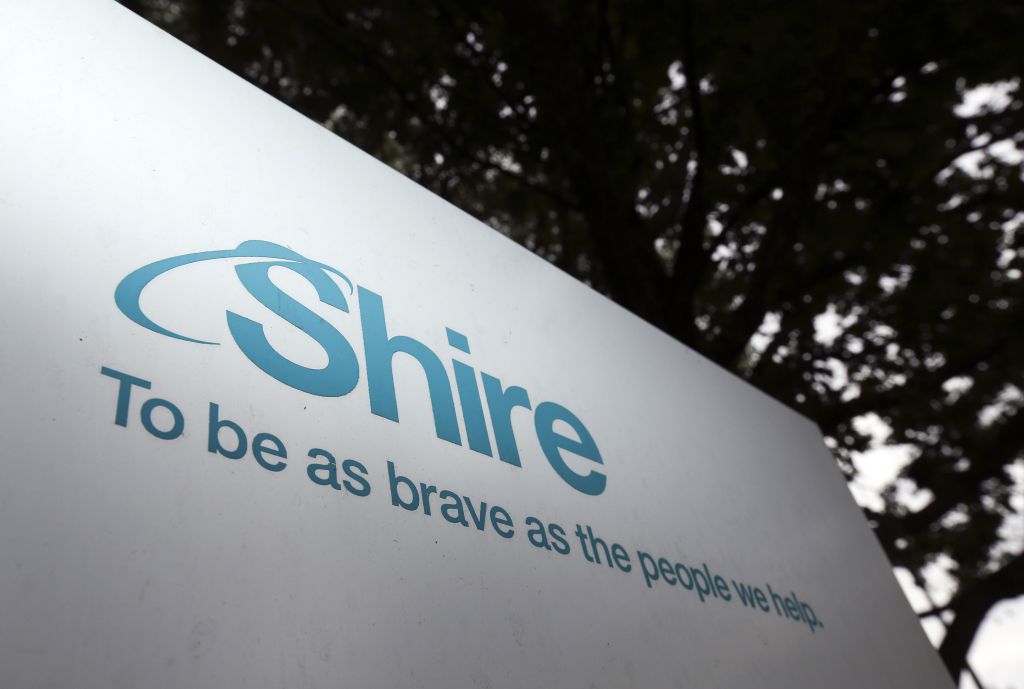
Premarket on Monday, we got word that Shire plc (NASDAQ:SHPG) is set to buy US biotech Dyax Corp. (NASDAQ:DYAX). The news comes as a bit of a surprise to markets, as the former is currently locked in an aggressive buyout tussle with Baxalta Incorporated (NYSE:BXLT), and the $5.9 billion it is coughing up for Dyax could hinder its capacity to fund the deal, despite management suggesting otherwise. Dyax is up more than 30% ahead of the US session bell, whereas Shire is down a little over 1% on the London session. Here’s a look at exactly what Shire is getting for its money, and a discussion of the implications of the asset acquisition for Shire’s financials going forward.
First then. Lets outline the terms of the merger agreement. As mentioned, Shire will pay $5.9 billion for Dyax at a per share rate of $37.30 – a circa 35% premium on the company’s Friday close. There is also an additional $646 million earmarked for issue on the approval of Dyax’s lead pipeline candidate, DX2930, which we will take a closer look at shortly. If everything runs according to plan, the two companies expect to close out the deal during the first quarter of next year, though there may be some delays rooted in Shire’s portfolio of drugs that already treat hereditary angioedema (HAE) – targeted indication of DX2390.
So – what is Shire getting for its money? Dyax has a few drugs in its trial pipeline, and a number of licensing deals that generate small number revenues, but the two primary assets Shire looks set to acquire are the aforementioned DX2930 and an already commercialized drug called Kalbitor (again, this one is an HAE therapy). As a quick note, for those not familiar with HAE, it is a blood disorder that causes rapid swelling of extremities and the face (and genitals, in rare instances). It’s very rare – affecting as few as 1 in 50,000 in the US. Looking at the science, it is caused by excessive levels of what’s called bradykinin, a peptide that is generally responsible for vasodilation and blood pressure reduction. Excessive bradykinin creates leakages in blood vessels, translating to swelling. Kalbitor inhibits the process that produces bradykinin. From a financial perspective, Dyaz reported Q3 2015 revenues for Kalbitor of $17.8 million – down from $20.3 million during the same period a year earlier.
The second asset is DX2930, which is also a therapy that inhibits the the production of excessive bradykinin. The key difference between the two drugs are Kalbitor is on-demand, it is taken as a response to an attack. DX2930 is a biweekly ongoing treatment targeted at preventing attacks from happening (the active ingredient is the same in both treatments, but the latter has a half life twice that of the former, allowing for it to be an ongoing preventative). The only other drug available as a preventative for HAE currently is Cinruyze, marketed by (you guessed it) Shire. This is the root of the antitrust issues we alluded to earlier that the companies may run into before the deal closes. The company reported promising data from a phase Ib earlier this year, and has just closed on the final protocol for a pivotal phase III with the FDA. If successful, we should see an NDA filed late 2016, early 2017.
And what about revenues? Well, Shire believes it can ramp up the Kalbitor revenues based on its ability to leverage its already successful dealings in the HAE space. If DX2930 is approved, analyst expects annual global sales of circa $2 billion. Taking into account the $646 million owed to Dyax on approval of DX2930, if Shire can meet its projections it should make back the debt financed total cost of the acquisition before the decade is out. This, of course, is an optimistic projection. The antitrust issues alone are enough to set back development if they come into play, so we must consider these before picking up an exposure to Shire based on its Dyax acquisition.




